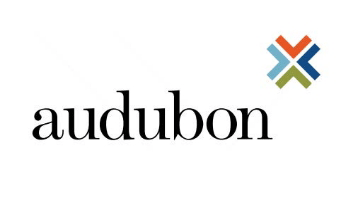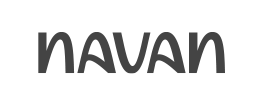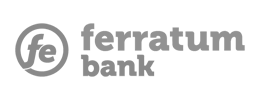Breaking down reconciliation: types, processes, challenges
When most people hear reconciliation they usually think of the direct meaning of the word i.e. “to bring together again” or “to make friendly again”. Even when you open a dictionary, the first explanation is “to find a way in which two situations or beliefs that are opposed to each other can agree and exist together“. Indeed, this is the initial meaning that originates from mid-14c. Some half a century later, the word is already used also for “making consistent” and these two notions cover the wide understanding about reconciliation.
However, mention “reconciliation” to someone in finance, and it would evoke a completely different picture and flow of thoughts. Spreadsheets, financial statements, accounts, balances, general ledger, exceptions, rows and rows of data will immediately pop up and replace any other interpretations. No wonder, as reconciliation in Finance is a whole different world to care and worry about.
So what is reconciliation in the world of F&A?
This is the process of comparing different sets of data in order to check and confirm that they have the same totals or pair in a specific, predefined way. In other words, the process ensures that records from two or more sources are correct, comparable, matching. This reassures the validity of the transactions and the accuracy of the company records. When reconciliation is performed, balances are confirmed for separate accounts and further transferred to the General Ledger. If discrepancies are found, these are noted and investigated. Reconciliation can be done daily or at period end but should be always consistent in order to produce reliable results.
Whether the definition sounds clear or not, the best way to understand reconciliation is by taking a closer look at what is really reconciled. The most typical types of reconciliation provide good examples of how companies actually do it and why. Let’s explore each of these in more detail.
What is account reconciliation?
Account reconciliation is where it all starts from and nearly all other types of reconciliation refer to it in some way. This is a process of verifying that account balances are correct by comparing two sets of records at the end of a particular accounting period. Discrepancies are identified and adjustments made to the account as required in order to report the correct values in the General Ledger.
What is bank reconciliation?
Bank reconciliation (or bank statement reconciliation) is the process of matching the transactional data coming from a bank statement with the relevant internal company data (coming from the cash account). The aim is to verify that each transaction in the bank statement is consistent and comparable to the internal records as presented in the company’s accounts. This process can get very complicated because of the difference in time when a particular transaction is recorded in the bank and in the company. Often adjustments are needed. Other complications can arise from differences in currencies and data formats, as well as potentially huge transaction volumes.

What is credit card reconciliation?
The process is very similar to bank reconciliation and carries much of its challenges, but with an additional twist. It refers to matching transactions in a credit card statement with an associated transaction within various internal financial records. Very often there are multiple steps involved (e.g. match card statement to POS, and then aggregate results to the bank). It is usually the volumes and the variety of sources that cumbers the process and causes anxiety among accountants and financial controllers.
What is positions reconciliation?
Positions reconciliation is the process of verifying that a company is holding the same number of securities that a counterparty states they are holding for that company. The balances of the two sources are reconciled in order to make the verification. This is also known as Holding Positions or Balance of Holdings. A main challenge in this activity is usually the lack of universal security identification. A variety of security IDs depending on geography, stock exchange, and type of instrument makes the comparisons between two or more sources very difficult and time consuming.
What is custodial accounts reconciliation?
Reconciling of each custodial account (i.e. P&I and T&I) means matching amounts paid and received on instruments held electronically with custodians to any internal statement. It is a process done regularly by banks to verify the accurate reporting of any operation with financial instruments. Again, a number of complications arise constantly starting from the increased trade volume and the various custodian banks and sub-custodians to be handled. Moreover, this is an area heavy with administrative requirements and regulations.
What is POS (Point of Sale)/Merchant/Gateway reconciliation?
This type of reconciliation is done to confirm a company’s internal records correspond to what is being recorded by the POS, Merchant, or Gateway system. In addition to ensuring that internal records are correct, these reconciliations also provide evidence that customer orders and payments are recorded correctly. Again, the main challenges come from the multiple systems that process the sales information (for example from online sales vs physical locations) and the different file and data formats used by each source.
What is balance sheet reconciliation?
Balance sheet reconciliation and attestation is probably the most important part of the period-end close for a company, especially those that are public, multi-national, or in heavily-regulated industries. It consists of confirming the accuracy and integrity of all key account trial balances by explaining each balance and if required, substantiating it with additional entries, document attachments, and explanation notes. Often times, there are sub-ledgers involved (containing a sub-set of transactions that explain the trial balance) which may be available in completely different data formats. The whole process can get very painful with multiple sources of data, hundreds or thousands of accounts, and dozens of people with interdependent tasks coming into play. Usually this is accompanied by time pressure and the need of full consistency and auditability of the records and operations performed, as the balance sheet reconciliation of public companies is subject to government regulations.
What is suspense account reconciliation?
A suspense account is an account that supports the reconciliation process. It is used to temporary store transactions that need further investigation before they can be classified correctly in the corresponding account in the GL. Suspense accounts are useful as repositories where transactions can be posted in the books as quickly as they occur but can remain there until sufficient information is available to confirm the correct further destination of the record. Ideally, suspense accounts should be cleared as quickly as possible by reviewing each individual transaction. Just like all other accounts, the suspense account needs to be reconciled at the end of each accounting period and if not balanced, the discrepancy requires further investigation.
This may all sound complicated, unnecessary or bothersome but actually reconciliation is a natural process that takes place in every company and in any industry. It used to be time-consuming and error-prone but this has changed tremendously in the last decade. Now, there are specialized tools that handle reconciliations quickly and easily, and moreover, automatically, leaving nothing more to the manual effort but the exceptions investigation. One such tool is ReconArt, a modern, flexible, web-based and rich in functionality software that is directed towards the business user. By using such a tool all reconciliation needs are covered and it is no more a pain to do the matching but an efficient process to support compliance, auditability and cost optimization.
After all, from the Latin “reconciliare” (bring together) to the modern “reconcile”, if something is reconciled, this means it has been settled. No matter if we are talking about good family relations or cleared bank transactions.

 follow our blog
follow our blog






















 Quick response
Quick response

